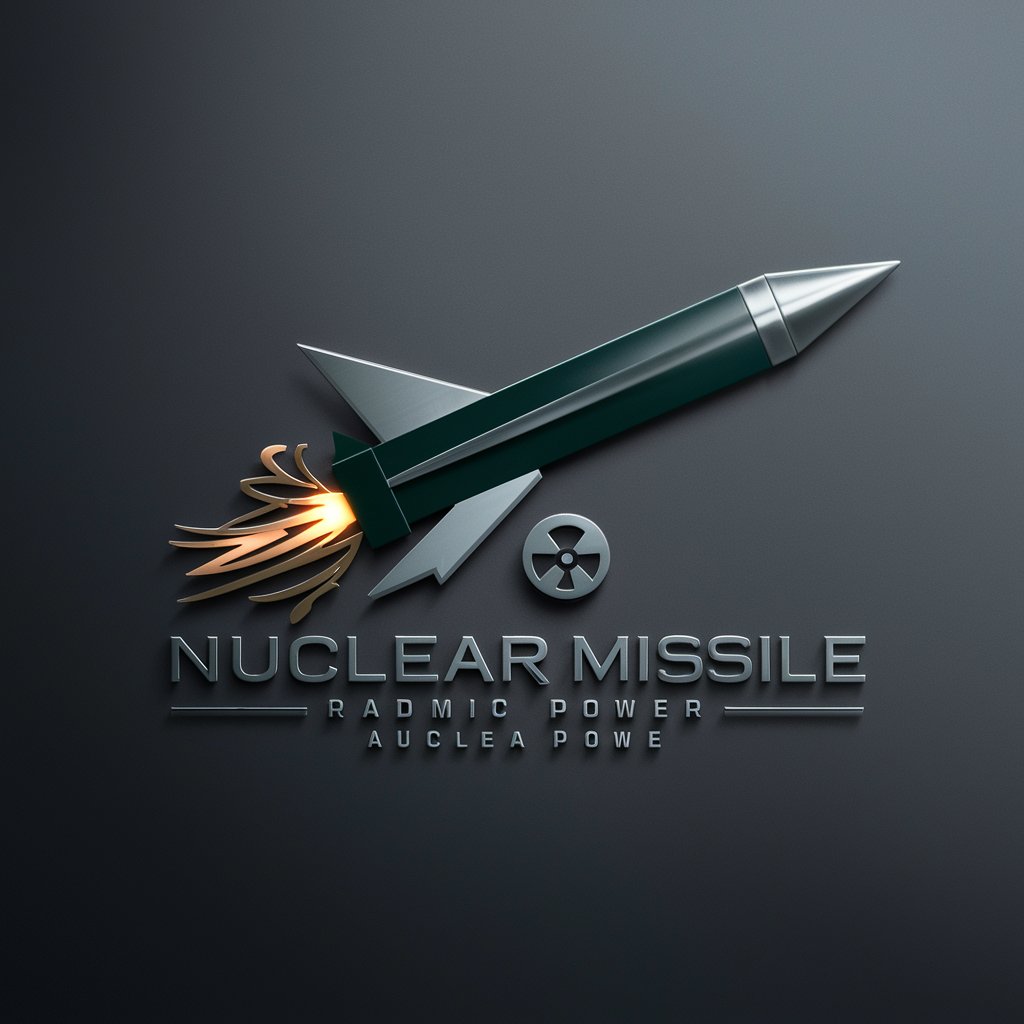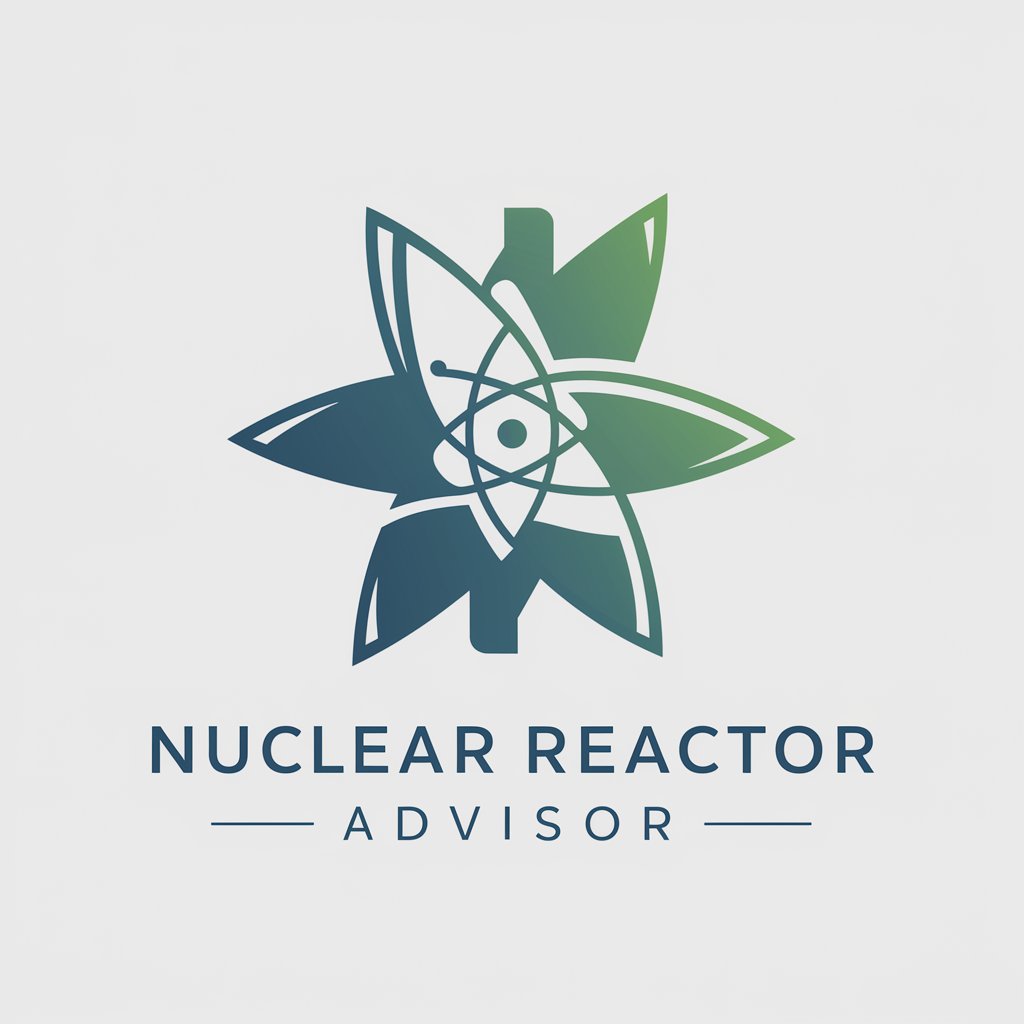
Nuclear Missile - Insight into Nuclear Technology

Welcome. I am your expert on nuclear missile technology.
Deciphering Nuclear Missile Secrets with AI
Explain the components and working principles of an ICBM.
Discuss the historical development of nuclear missile technology.
What are the strategic implications of submarine-launched ballistic missiles?
Compare and contrast different types of nuclear warheads used in modern arsenals.
Get Embed Code
Overview of Nuclear Missile Technology
Nuclear missiles are advanced military weapons designed to deliver nuclear warheads over long distances with high precision. Their primary design purpose is strategic deterrence, aiming to prevent aggression by posing a credible threat of unacceptable retaliation to potential adversaries. These systems are characterized by their propulsion methods (ballistic or cruise), range (tactical, intermediate, strategic), and launch platforms (land-based silos, submarines, aircraft). A notable example is the Intercontinental Ballistic Missile (ICBM), like the Minuteman III of the United States, designed for high-speed delivery of nuclear warheads across continents. Another example is the submarine-launched ballistic missile (SLBM), such as Russia's Bulava, which can be deployed from underwater to ensure second-strike capability. These examples illustrate the dual-use nature of nuclear missiles in both deterrence and defense strategies. Powered by ChatGPT-4o。

Core Functions of Nuclear Missile Systems
Strategic Deterrence
Example
The existence of ICBMs in a country's arsenal
Scenario
Countries maintain ICBMs as a deterrent against nuclear attack, under the principle of Mutual Assured Destruction (MAD), ensuring any nuclear aggression would result in significant retaliation.
Tactical Nuclear Support
Example
Short-range ballistic missiles (SRBMs)
Scenario
In a regional conflict, SRBMs like the Iskander missile can be used to target military facilities or concentrations of forces, providing tactical advantages without escalating to strategic nuclear warfare.
Second-Strike Capability
Example
Submarine-launched ballistic missiles (SLBMs)
Scenario
SLBMs ensure a nation can retaliate even after a first-strike nuclear attack, with submarines acting as undetectable launch platforms, thus maintaining the effectiveness of nuclear deterrence.
Anti-Ballistic Missile Defense
Example
Ground-Based Midcourse Defense (GMD) system
Scenario
The GMD system is designed to intercept and destroy incoming ballistic missiles in space during their midcourse phase, providing a defensive layer against potential nuclear or conventional missile attacks.
Target Users of Nuclear Missile Technology
National Defense Agencies
Governments and their military branches responsible for national security. They benefit from nuclear missile technology by ensuring strategic deterrence, maintaining peace, and securing national interests.
Strategic Planners and Analysts
Individuals and organizations involved in defense planning, threat assessment, and policy making. They utilize insights from nuclear missile capabilities and strategies to formulate national defense policies and international relations.
International Security Organizations
Entities such as NATO or the United Nations, which are involved in promoting global security and arms control. Understanding nuclear missile technology aids in developing treaties, monitoring compliance, and facilitating disarmament efforts.

Guidelines for Utilizing Nuclear Missile
Initiate Access
Begin by accessing a specialized platform offering comprehensive insights into nuclear missile technology without the need for registration or a premium subscription.
Understand Prerequisites
Familiarize yourself with basic knowledge of military technology and nuclear physics to fully appreciate the detailed technical discussions and analyses.
Explore Use Cases
Investigate common applications such as academic research, military strategy planning, and educational purposes to leverage the tool's capabilities effectively.
Engage with Content
Utilize the Q&A feature to deepen your understanding of nuclear missile technology, including historical context, design nuances, and strategic implications.
Apply Knowledge
Apply the insights gained to relevant scenarios, ensuring a responsible and informed approach to discussions and analyses involving nuclear missile technology.
Try other advanced and practical GPTs
C Store Publisher
Empowering Your Words with AI

Contract Craft SAP Related Services
AI-Powered SAP Contract Crafting

Under Contract
Empowering rental and contract decisions with AI.

iOS Swift Sensei
Empowering Swift Learning with AI

Психологический Исследователь
Unlock Your Potential with AI-Powered Personality Insights

Developmental Editor
Transform Your Manuscript with AI

Menswear
Elevate Your Style with AI-Powered Menswear Advice

Pawn
Empowering your pawn shop experience with AI.

Content King
Elevate Your Content with AI-Powered SEO

Historien Capgemini & Michelin
AI-Powered Historical Business Insights

Design solutions for packaging people
Elevate Packaging with AI Creativity

Disposable
Empowering Eco-Friendly Choices with AI

Detailed Q&A on Nuclear Missile
What is the historical significance of nuclear missiles?
Nuclear missiles have played a pivotal role in shaping global military strategy since World War II, acting as a key deterrent in the Cold War era and redefining the principles of mutual assured destruction.
How do nuclear missiles work?
Nuclear missiles operate by delivering warheads to a designated target using ballistic or cruise missile technology, where the warhead detonates to produce a nuclear explosion, causing massive destruction through blast, heat, and radiation.
What are the strategic implications of possessing nuclear missiles?
Owning nuclear missiles significantly impacts a nation's defense strategy, offering deterrence against attacks, influencing geopolitical dynamics, and necessitating the development of countermeasures and arms control agreements.
How has nuclear missile technology evolved?
Nuclear missile technology has advanced from early atomic bombs to modern ICBMs with MIRV capabilities, incorporating improvements in accuracy, stealth, and countermeasure evasion, reflecting ongoing arms race dynamics.
What ethical considerations surround nuclear missiles?
The use of nuclear missiles raises profound ethical questions regarding civilian casualties, environmental impact, and the long-term consequences of nuclear fallout, emphasizing the need for rigorous international arms control measures.





